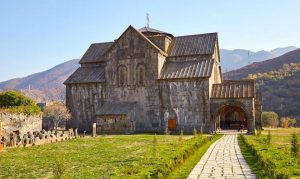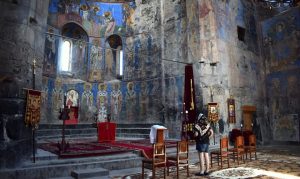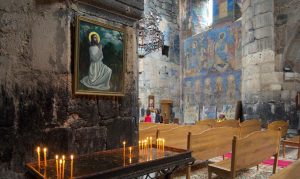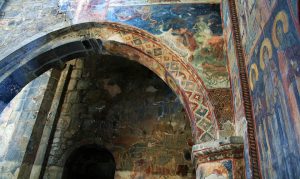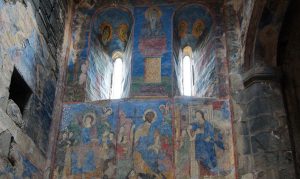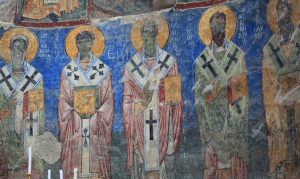Akhtala
AKHTALA
Akhtala, also known as Pghindzavank ("Coppermine Monastery" in Armenian) is a 10th century Armenian Apostolic monastery located in the town of Akhtala in the Lori Province.
The Akhtala fortress was built on an elevated rocky outcrop surrounded by deep canyons from three sides forming a natural protection. One of the cliffs that surrounds Akhtala is known as Lenktemur, named after Tamerlane who according to local tradition buried one of his wives under the cliff.
Since the late 18th century the monastery serviced ethnic Greeks who had settled in Akhtala in order to work in the gold, silver and copper mines. Currently, the monastery has its pilgrimage days on September 20-21. Armenians, Greeks and Georgians visit the monastery on this occasion.
The main building of the monastic compound is Surb Astvatsatsin (Holy Mother of God) church, which is famous for its highly artistic frescoes, which cover the inside walls, the partitions, and the bearings of the building. The murals are one of the best representations of Byzantine art outside the traditional borders of Byzantium. The majority of the murals bear scriptures in Georgian and Greek. The murals were painted under the patronage of Ivane Mkhargrdzeli between 1205 and 1216.
The church used to contain the cross, which according to folklore was used by John the Baptist to baptise Jesus Christ. Vasak, the father of Armenian Prince Prosh, is said to have given this relic to Ivane Mkhargrdzeli who later sold it for a large sum to the monastery of Noravank in Syunik.
The prominent Armenian filmmaker of the 20th century Sergei Parajanov filmed two episodes of his film "The Color of Pomegranates" at the Akhtala Monastery.


